How much does OSB cost? How many mm should the OSB be? 6 mm? 8 mm, 10 mm? Or maybe thicker. 15 mm, 18 mm or 22 mm? Is OSB resistant to the outside? Why is it used in house building? These are common questions for DIY enthusiasts.
Wood-based panels are present in our homes and it's good to know as much as we can about them, the good and the not so good. PAL, MDF or tackle, each had dedicated articles, with history and possible uses. OSB is a widely used board in construction and beyond. Prefabricated panels for wooden houses have OSB in the structure.
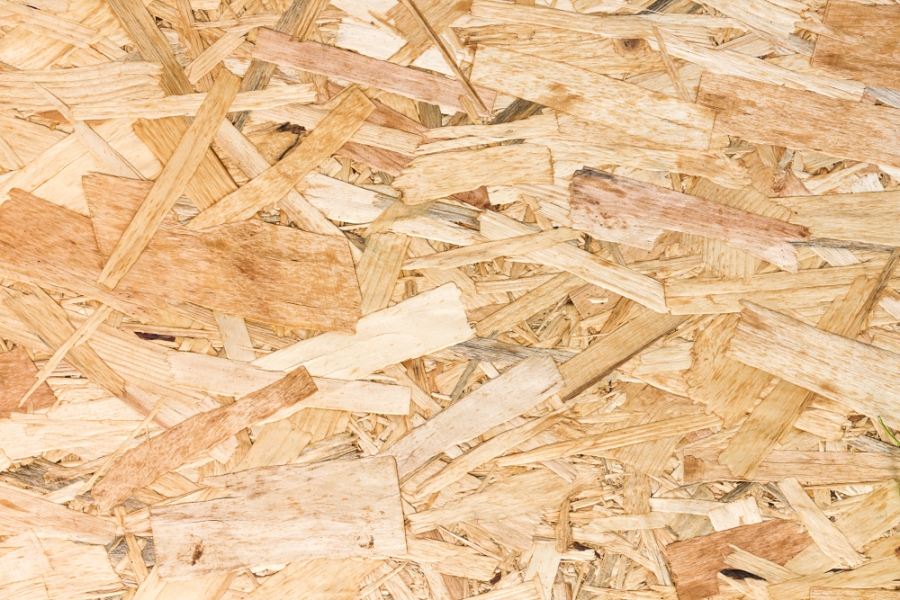
What is OSB and what are its strength qualities
OSB is a "younger" board that appeared in the USA in 1963 and was invented by Armin Elmendorf. The name OSB comes from Oriented Strand Board, which loosely translated means oriented strand board. Strips are larger slivers of wood (some call them veneer pieces) that are 2.5 cm wide and 15 cm long. The boards from these chips are very strong, which is why OSB is used for structural purposes in construction.
One reason for the increased resistance is the splintering of the splinters before they are glued and pressed. The outer layers are laid, say, lengthwise, while the middle layer is laid perpendicular to the first two. This oriented laying gives it strength and stability over time, similar to plywood, with which OSB is often compared.
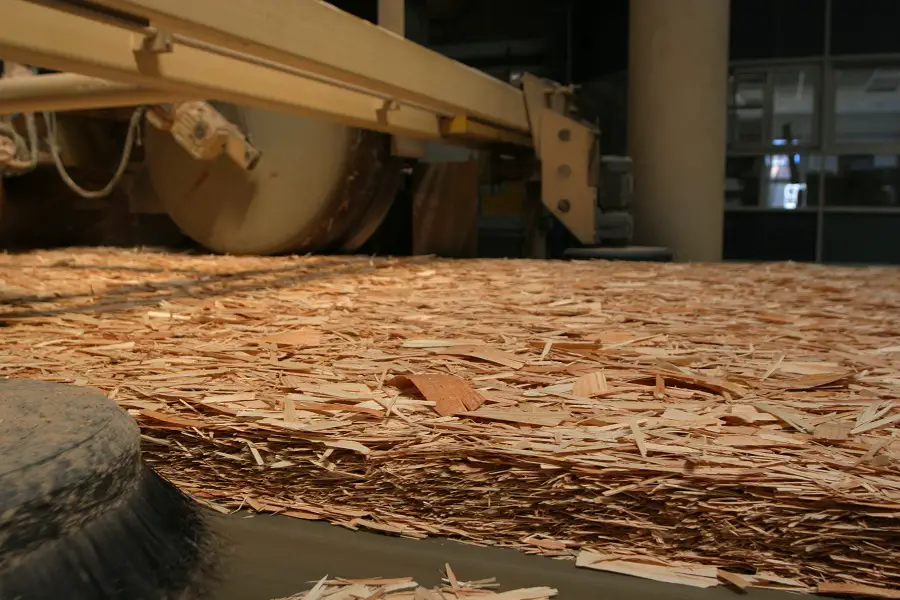
Second reason: very high temperature and pressure during the manufacturing process. Before being pressed, the chips are stopped with melamine-urea-formaldehyde adhesive and wax, after which they are pressed. The result is a slab with very good load-bearing strength, elastic, uniform, with low formaldehyde emission, with a wood content of 95%.
If it's so similar to plywood, why was a wood-derived material needed? Because OSB is cheaper and more uniform than plywood, it can be made from different wood essences And most importantly, young trees from nurseries, grown especially for this purpose and continuously replanted, can be used. This eliminates the need to cut mature forest trees. Another plus is the percentage of wood content, which is much higher compared to other wood-based panels.
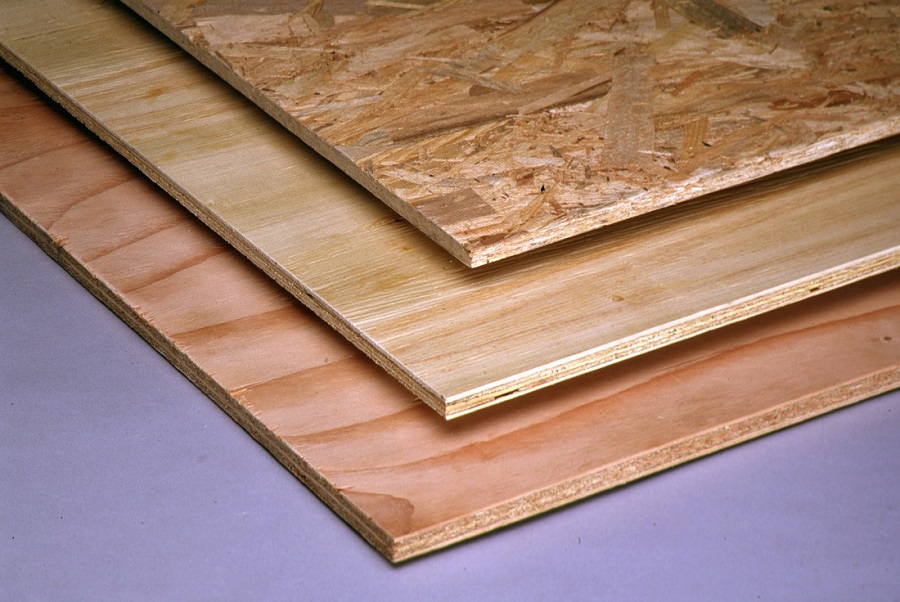
OSB grades, depending on the area of use:
- Class 1 - for use indoors, in a dry environment - is suitable for making furniture
- Class 2 - load-bearing slabs used in dry construction
- Class 3 - load-bearing tiles for use in damp environments
- Class 4 - high-strength load-bearing slabs for use in damp environments.
The reference to wet does not mean that the board can be kept in water. If placed in water it will absorb more water than plywood. This is the downside of OSB compared to plywood. The edges of the board are protected against moisture absorption, but the moment they are cut, this protection disappears. That's why builders need to bear this in mind and be very careful how they install these boards.
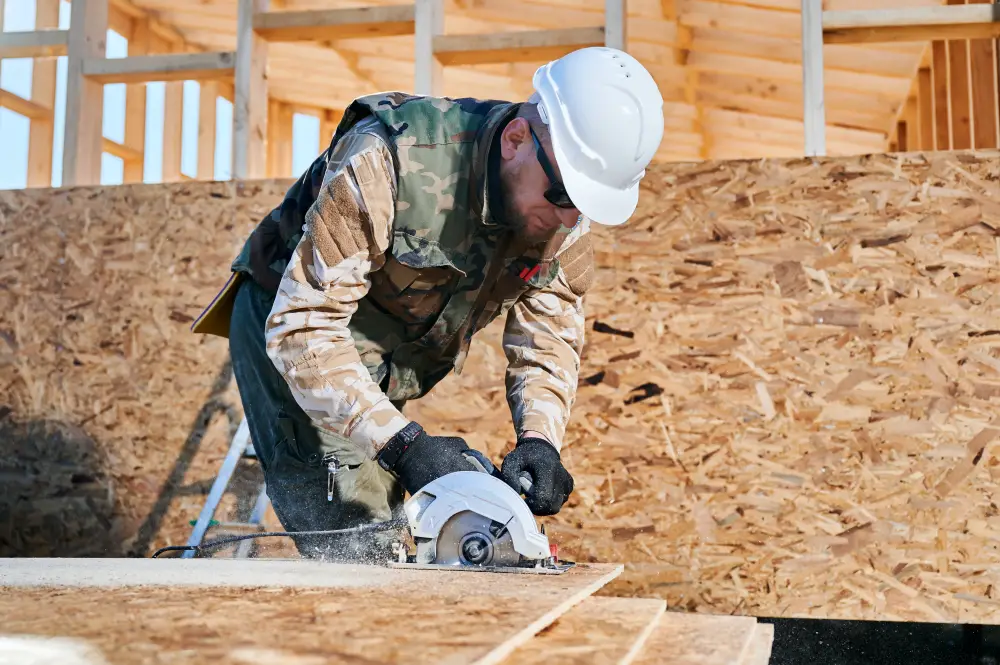
OSB has emerged as an alternative to other building materials
Houses built with OSB are lighter and more earthquake-resistant, and partition walls provide a good thermal and sound insulation. The tiles can be used for floors, ceilings, partitions and interiors, on the roof for as asterials. They are easy to install and the work progresses much faster than in traditional cases. It should always be borne in mind that the strength of the boards is greater in the direction of the outer layers of chips. From the factory, the greatest strength is along the length of the board.
OSB has long since moved beyond the construction industry and into the interior decorationarchitecture and furniture. The very affordable price, ease of processing, durability and last but not least the interesting look have made many designers take it more into consideration.
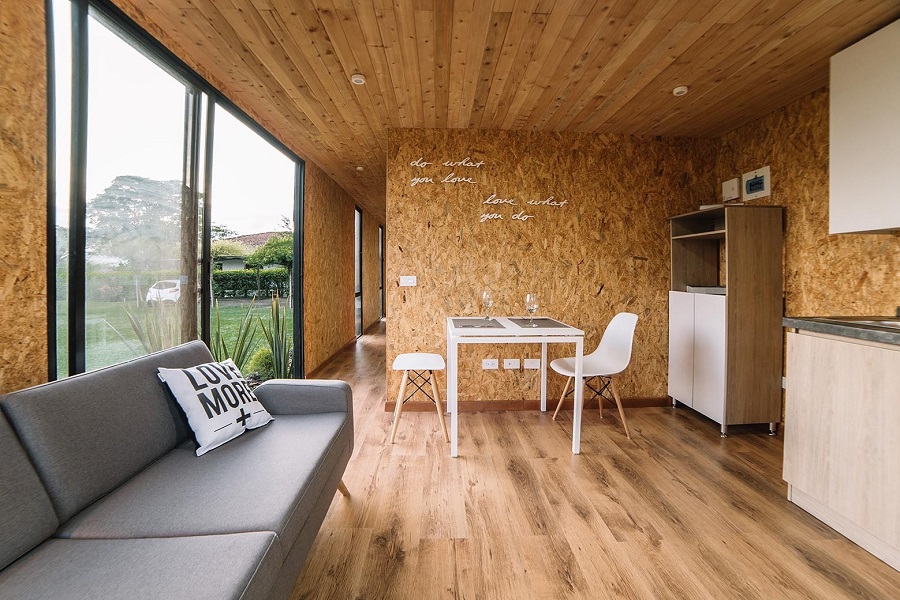

A surprise to me was to see that some ventured out to get an OSB sink. The designers at domEco have thought of this and D. Moretti from Mechanical Joinery he did it. The cuts are absolutely flawless so that the edges blend perfectly. The insulation was done with resin (probably epoxy), and obviously finished with a highly water-resistant varnish.
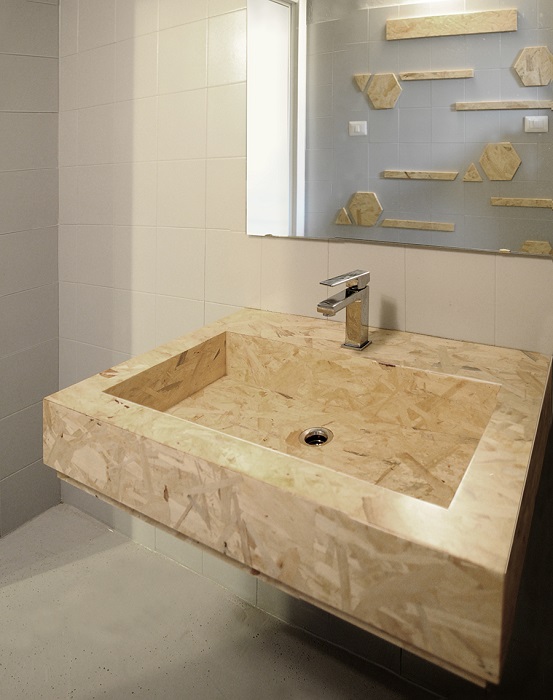
As you can see, OSB is an alternative to consider when thinking about remodeling, even furniture projects, but especially when building a house. I'll be back soon with some articles about wooden houses where the walls are a sandwich and with such OSB, which is very easy to install. So stay tuned!





















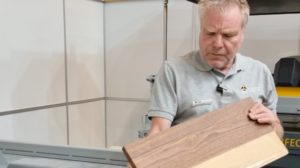
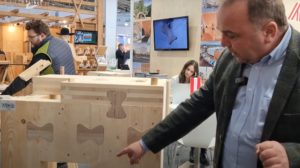
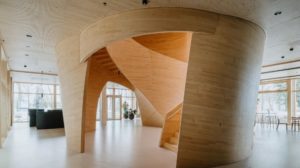

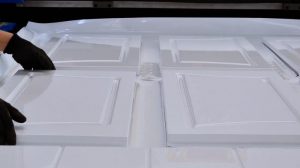
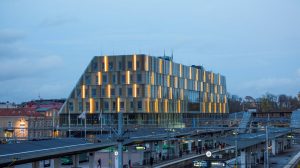
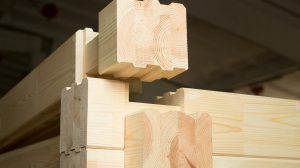

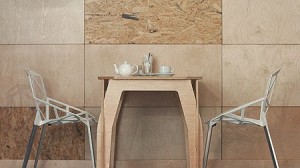



Put pieces of OSB 3 in the water and see how it behaves. I say fine.
Hello, is it possible to board the interior walls of the apartment and paint with lime?
Good evening.
Yes, it can, but it won't look like the wall washed afterwards. To look like that it has to be plastered first.
All the best!
You mentioned in the article about formaldehyde and formaldehyde emissions. Although I see OSB being used more and more I haven't found much information about the health risks it poses with this chemical content. Can you provide more information along these lines please? (I suspect that plywood and similar wood-based products also contain such substances)
Hello. Formaldehyde is all around us, including in natural wood. Exceeding certain emission limits makes this substance dangerous. In wood-based boards (chipboard, MDF, OSB) the main source of formaldehyde is ureoformaldehyde glue or its derivatives used to bind wood chips or fibres. These contain free formaldehyde. Formaldehyde is one of the raw materials used to make the adhesive. Molecules not bound by the copolymerisation reaction remain free and tend to escape. Hence the increased emission of formaldehyde. To reduce the emission, other copolymerisation raw materials are used or substances that react with free formaldehyde, called formaldehyde scavengers, are used. These materials are more expensive so lead to a higher price of the boards. So there are cheaper boards with higher emission and more expensive boards that fall into the E1 or E0 formaldehyde emission class. OSB is one of the lower emitting boards, and the boards are used extensively in construction. To give you an idea, the top (in terms of hierarchy) OSB producers in the world are the USA and Canada, where many such houses are produced.
The plywood has low emission because it has a different production process. It is obtained by gluing wood veneers together.
You can find more information about formaldehyde and here.
I hope you found it useful.
All the best!
Have we ended up making and promoting furniture from "waste"!?
Hello
I have a question: can the OSB surface be "painted"/ waterproofed with an epoxy resin of the food-grade type? Does it adhere or not? I've heard some opinions that epoxy would not grip on OSB surface. in this case, if so, would a light sanding of the OSB beforehand increase adhesion? I am planning to make an aquarium type enclosure of OSB combined with glass and I am looking for a better and less toxic way to waterproof the OSB. Thanks 🙂 🙂
Hello.
I don't know what you mean when you say food grade epoxy resin. But it can be treated with epoxy wood resin. Light sanding is good as it removes any waxes on the surface of the board thus increasing adhesion.
All the best!
I am referring to epoxy resins used for sealing containers used for storing food or drinking water. any other epoxy resin no matter how "safe" it says on the label that it would be releases toxic radicals over time that affect the chemical composition and quality of the products in those containers. that's why for waterproofing outdoor tanks for young fish will not be used only food type resins or those specially created for fish tanks that unfortunately no company imports / produces them in Romania 🙁
Hello
Could I build a 5 m / 2.5 m osb tank and waterproof it to keep fish in it?
Thank you
Hello.
It has to be very well waterproofed because if water gets to it, it swells. I recommend that you make the frame waterproof and then put waterproof film over the whole surface. Otherwise it is very difficult to make sure that water does not reach the board at the joints.
All the best!
Don't forget to subscribe to the printed Wood Magazine! For only 58 lei/year you can find out news in the field, discover craft ideas or trade secrets. We remind you that the content in the printed magazine is different from the one on the website. Details in the link below.
Thank you!https://revistadinlemn.ro/product/abonament-revista-din-lemn/
Hi I have a question can I use OSB instead of blind batten on a roof that will have board on it if so how thick can it be thank you.
Good evening! I would be interested if, for interior furniture, OSB - can be cantilevered, like chipboard. Is edgebanding used for OSB furniture or not?
Hello!
OSB is mostly used in construction, where it is not grouted. But if you want to use it for furniture, you can grout it just as you grout chipboard.
All the best!
[...] of three layers, two outer layers made of spruce wood and one inner layer of OSB plywood [...]